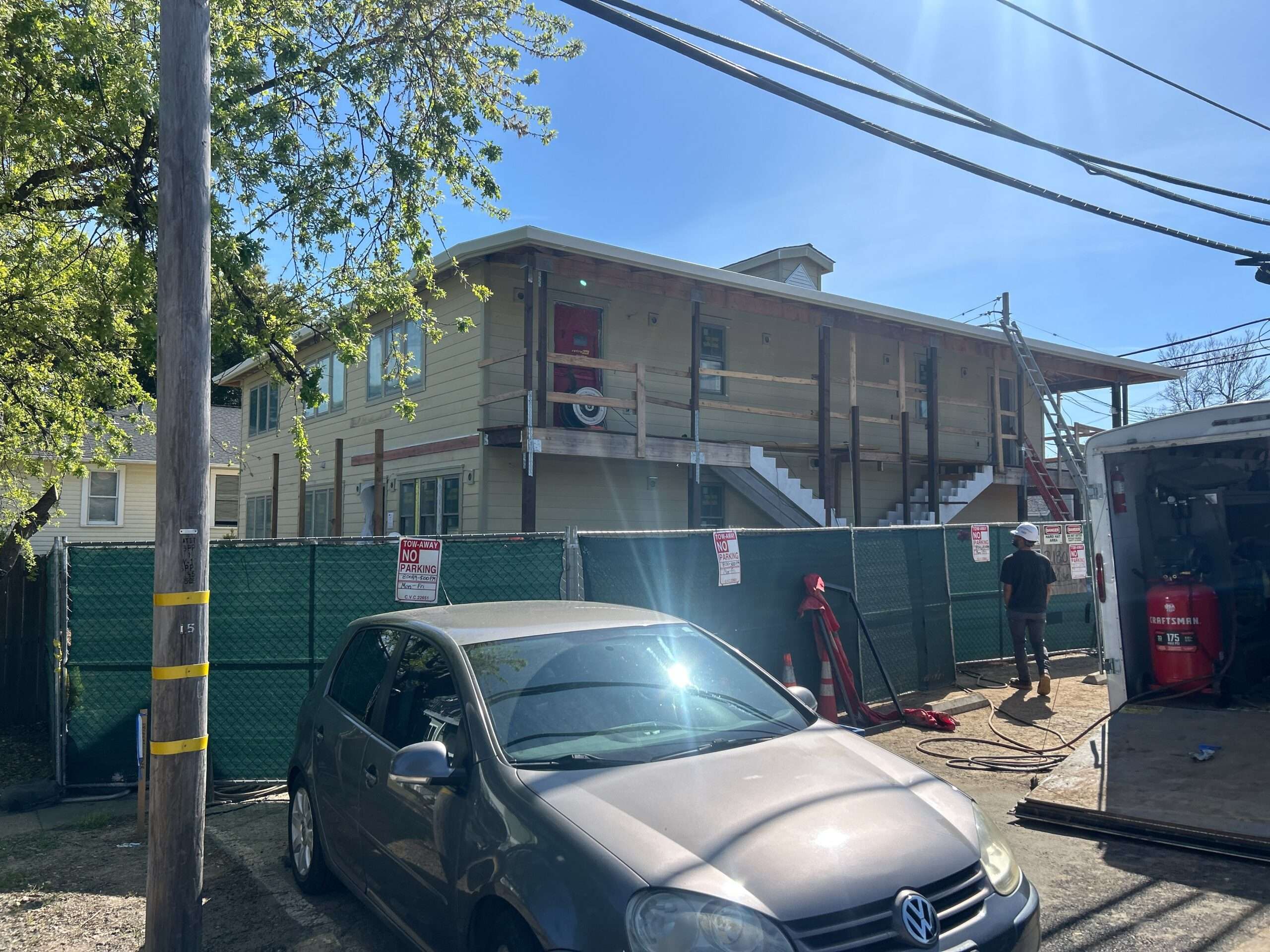Enhancing Multi Family Residence Efficiency: A Case Study on Aeroseal Envelope Installation

In the realm of multifamily housing, energy efficiency and tenant comfort are paramount. Is there a place for multi family dwelling air sealing? Advanced technologies like Aeroseal are revolutionizing how we approach air sealing in apartment buildings. This case study explores a recent Aeroseal envelope installation in a three-unit apartment building, highlighting the process, benefits, and outcomes, particularly focusing on compartmentalization and significant leakage reduction.
Project Overview
Location: Yountville, CA, USA
Building Type: Three-unit multi family building
Construction Type: New construction
Goal: Achieve a highly compartmentalized building envelope for each unit to enhance privacy and energy efficiency.
The Challenge
The multi family building’s owners aimed to improve energy efficiency and indoor air quality for their tenants while also ensuring compartmentalization for privacy. Each unit previously experienced substantial air leakage, leading to high energy bills and inconsistent indoor temperatures. The challenge was to find a solution that would significantly reduce air leakage in each unit.
Why Aeroseal Envelope?
Aeroseal was chosen for its ability to deliver precise and measurable results in sealing air leaks. The system’s computer-controlled process aerosolizes a water-based sealant that is blown into the apartment units under pressure. The sealant particles are suspended in the air and automatically find and seal leaks up to 1/2 inch in size, making it ideal for achieving airtight compartments in multi family buildings.
Installation Process
- Preparation: Before starting the Aeroseal process, each unit was prepared by sealing off areas that did not require sealing, such as vents and ducts. Temporary plastic sheeting and tape were used to cover these areas, ensuring the sealant targeted only the necessary leaks.
- Setup: The Aeroseal system was installed, with fans and aerosolizing equipment placed in each unit. The building was divided into three separate zones to ensure thorough and targeted sealing.
- Application: Over the course of a few hours per unit, the Aeroseal sealant was released into each pressurized apartment. The process was continuously monitored via computer, with real-time data displaying the reduction in air leakage as the sealant filled gaps.
- Verification: Upon completion of the sealing process, blower door tests were conducted for each unit to measure airtightness. The results showed a significant reduction in air leakage, with each unit’s leakage reduced by over 50%.
Results
Unit 1:
Pre-AeroBarrier: 10.64 ACH50
Post-AeroBarrier: 1.59 ACH50
Unit 2:
Pre-AeroBarrier: 4.71 ACH50
Post-AeroBarrier: 2.22 ACH50
Unit 3:
Pre-AeroBarrier: 7.91 ACH50
Post-AeroBarrier: 2.01 ACH50
This substantial reduction in air changes per hour demonstrates a much tighter building envelope, leading to enhanced energy efficiency and tenant comfort.
Benefits Realized
Energy Efficiency: The improved airtightness means that each unit’s HVAC system operates more efficiently, leading to lower energy bills for tenants and reduced overall energy consumption for the building.
Privacy: Compartmentalization ensures that each unit is a distinct and controlled environment, minimizing sound transfer and improving tenant privacy.
Comfort: Eliminating drafts and reducing air leakage ensures more consistent indoor temperatures, enhancing overall comfort for tenants.
Indoor Air Quality: A tighter envelope reduces the infiltration of outdoor pollutants, improving the indoor air quality for each unit.
Cost Savings: Both the building owners and tenants can expect significant savings on energy bills, providing a return on investment for the Aeroseal installation within a short period.
Conclusion
The Aeroseal installation in this urban apartment building showcases how advanced air sealing technology can significantly enhance energy efficiency and tenant comfort. By creating airtight building envelopes for each unit, Aeroseal not only improves the building’s performance but also contributes to a more comfortable, private, and healthier living environment.
For property owners and managers seeking to meet energy standards and improve tenant satisfaction, Aeroseal presents a reliable, efficient, and effective solution. This case study highlights the transformative potential of adopting innovative building technologies like multi family dwelling air sealing to save on energy costs.
Read more about Yountville, CA
Case Study: Novato Residential
